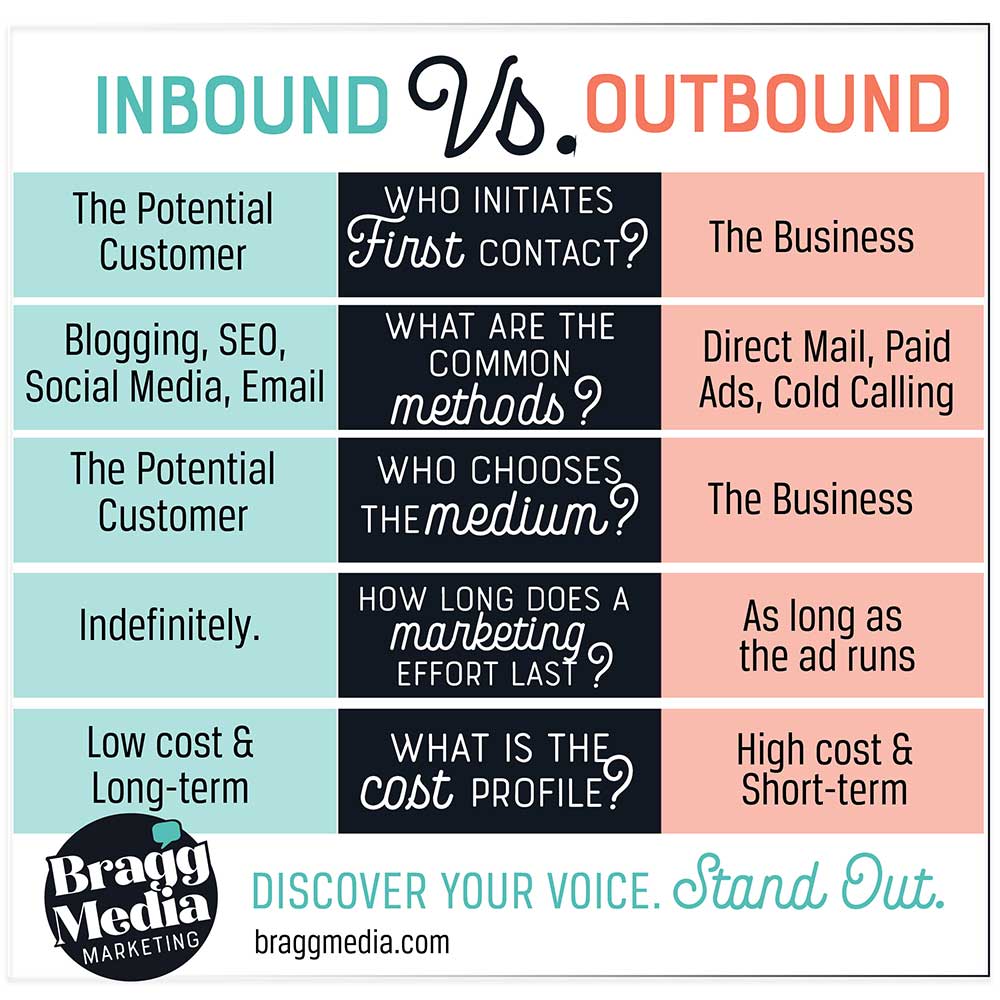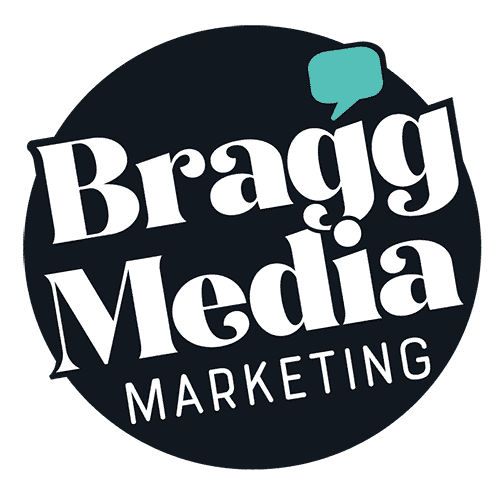Eight inbound marketing myths and tips to help improve your business

When we receive inquiries about managing digital advertising, we examine the potential client’s website first. If the website is difficult to navigate, has bad information and doesn’t have any online forms, we tell the client the website needs work before traffic is directed to it. If your home needs cleaned, the weeds have taken over the yard and the lights are out, how do you expect to welcome visitors?
Without a solid inbound marketing foundation, any investment in outbound marketing won’t give your business the return on investment you need. Inbound marketing is focused on sending high-quality content to your audience when they need the information. Inbound marketing uses content, social media, websites, e-mail and more to help your audience solve problems.
When inbound marketing is done well, it inspires your audience to seek more information, drives prospects through the sales journey to become customers and converts customers to be your ultimate word-of-mouth sales machine.
Still skeptical? Here are some common myths about inbound marketing and what you need to know to make the right decision for your business:
Like what you’re reading?
Subscribe to Bragg Media’s
monthly newsletter.
Inbound Marketing Myth #1: Do not purchase ads or other forms of outbound marketing
This is not true.
Without a solid foundation, why would you try to build a house? Inbound marketing represents the messaging and communication of your business. If you have an ad that links to your website but your website offers next to no information about your business/services, will that build trust?
The answer is no.
When it comes to generating leads and turning them into customers, outbound marketing is a powerful tool. Imagine a potential customer sees an ad and is taken to a website that has up-to-date information and valuable content that answers their questions or helps them solve a problem. Converting this potential customer becomes much easier when trust has been built.
If your website isn’t producing leads, ask yourself:
- Do I have blog posts that educate people about my product or service?
- What kind of free ebook or white paper can I offer?
- How can I show my audience how successful my product or service is with a case study?
- What kind of testimonials help tell my story?
Inbound Marketing Myth #2: Inbound marketing costs a lot and doesn’t give much in return
False. Super-duper false!
Here’s the truth: The average cost per lead for outbound marketing is a whopping $346. Conversely, the average cost per lead for inbound marketing is only $135.
Compared to outbound strategies, leads generated from inbound strategies are acquired at a 61% lower price. Outbound marketing typically centers on short-term marketing goals and are limited by the amount of money put behind it. Inbound marketing lasts indefinitely. For example, timeless or evergreen blogs can have a compounding effect on your website’s Search Engine Optimization (SEO), bringing in traffic for years to come. Another good example is a guest blog or article on a high traffic website. That one article can be a major source of traffic.
Inbound Marketing Myth #3: It takes too long to see the results of your inbound marketing efforts
Sort of true.
This is where using outbound marketing in conjunction with strong inbound marketing strategies come into play.
Inbound marketing is a long-term strategic game. It does take time and consistency to develop content and to see results. Blogs, for instance, take time to be indexed through search engines. They also might need updating and refreshing from time-to-time. However, they will continue to be a lead-generating tool for the life of the website. Your social media fans and followers, however, will immediately notice when you begin to post quality content.
Once your website is up to snuff, outbound marketing will produce the results you want.

Inbound Marketing Myth #4: It’s just about blogging
This is not true.
Blogging plays a very important role to inbound marketing. However, it’s only one piece of the puzzle. Inbound marketing relies on many types of content that informs the process of your business, pre-qualifies leads, promotes a new sale or encourages your customers to engage.
Other forms of inbound marketing include videos, social media graphics, SEO, ebooks, social media, public relations, etc. The content should focus on three goals: to attract, to engage and to delight. Inbound marketing is not solely centered on your website. It’s about the whole story of your brand and how you tell it.
Marketing Retainers
Website Audit
Inbound Marketing Myth #5: It takes a lot of effort
This is sort of true.
Inbound marketing takes strategy, planning, tweaking, testing and tweaking again. It also takes consistency and quality.
But so does owning a business.
If you can be doing something that can increase qualified leads and the average lifetime value of a customer, isn’t the effort worth it?
Yes! I’m ready for a marketing agency.
Fill out this two-minute marketing assessment form and receive a free one-time marketing consultation.
Inbound Marketing Myth #6: Inbound marketing requires HubSpot or some other expensive CRM
False!
You can utilize inbound strategies using FREE digital resources. Customer Relationship Management (CRM) should be part of every marketing plan’s toolkit. However, there are a lot of CRMs that are free or available at a low cost.
HubSpot’s CRM is free and offers bountiful benefits that will take your marketing to a new level:
- Organizes and segments your contacts
- Offers drag-and-drop e-newsletter
- Forecasts sales and runs reports
- Books meetings
Inbound Marketing Myth #7: Inbound marketing is for B2C businesses only
Definitely false.
At its core, inbound marketing is about building trust and engaging with your audience. It is a logical solution for any company in any industry.
Here’s an example of how inbound marketing can work for law firms.
Inbound Marketing Myth #8: Inbound should be your only marketing strategy
False!
Inbound marketing should be used in conjunction with your outbound marketing strategy. The difference between a successful business and an unsuccessful business is a healthy balance between outbound and inbound marketing. Don’t make the mistake of overvaluing outbound marketing and undervaluing inbound marketing (and vice versa).
Simple changes that will improve your approach:
- If you have a blog, make sure the posts are filled with up-to-date information and optimized for SEO. It’s possible to increase the number of your monthly organic search views of old blog posts by 106% with simple SEO adjustments. Read more about that here.
- Video! Video! Video! This is arguably one of the most underutilized content strategies in business today. Today’s audience loves to be entertained by YouTube and TikTok. Using video content is 50 times more likely to drive organic search results over plain text, according to the latest marketing research.
- Take advantage of local SEO. The statistics surrounding local SEO are mind-blowing. More than 60% of mobile searches are more likely to contact a local business if they have a mobile-friendly website, according to this blog. Plus, there has been a 900% increase in searches that contain the phrase “near me today/tonight” over the last two years, says Think with Google.


